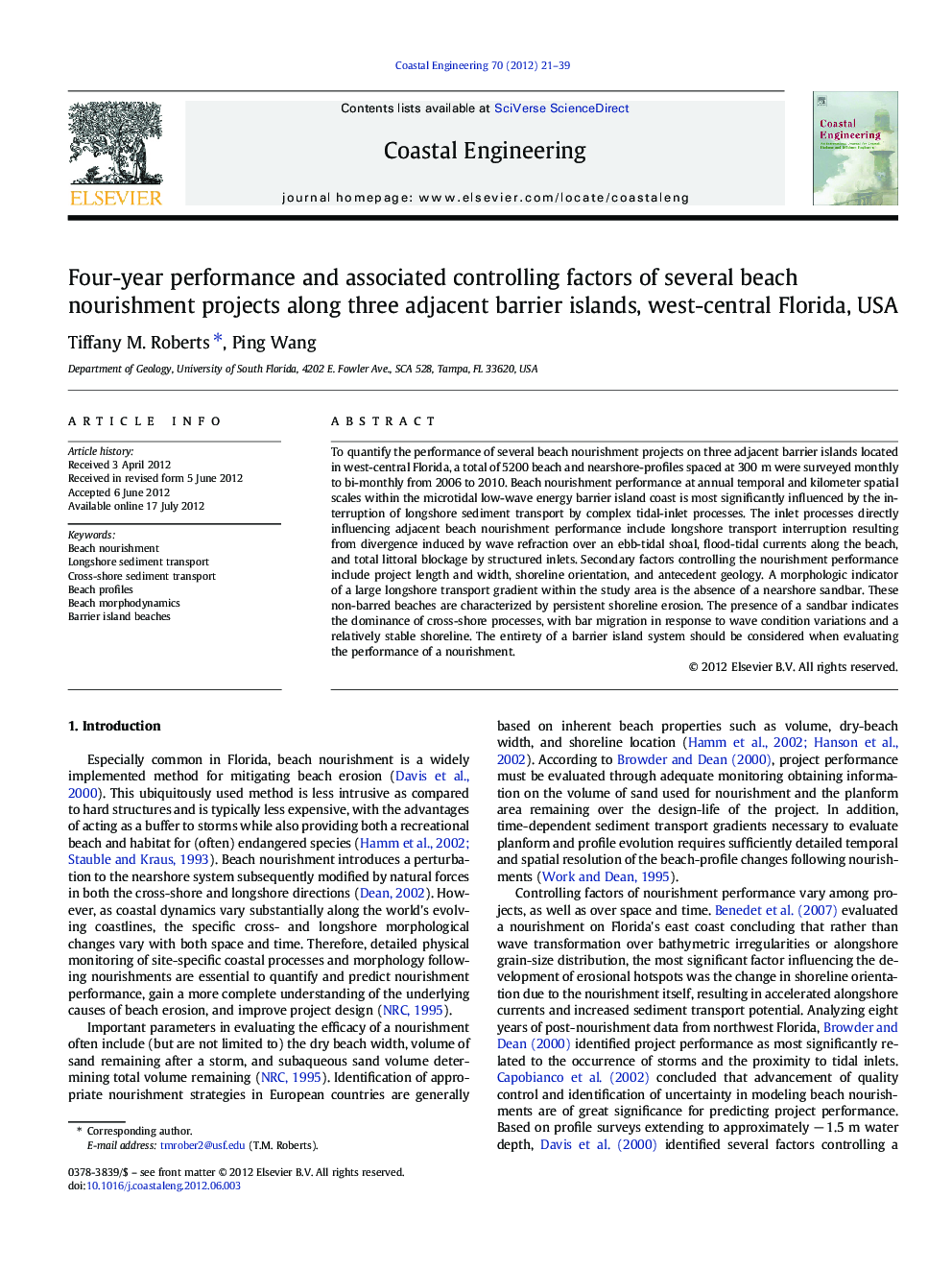| Article ID | Journal | Published Year | Pages | File Type |
|---|---|---|---|---|
| 1720920 | Coastal Engineering | 2012 | 19 Pages |
To quantify the performance of several beach nourishment projects on three adjacent barrier islands located in west-central Florida, a total of 5200 beach and nearshore-profiles spaced at 300 m were surveyed monthly to bi-monthly from 2006 to 2010. Beach nourishment performance at annual temporal and kilometer spatial scales within the microtidal low-wave energy barrier island coast is most significantly influenced by the interruption of longshore sediment transport by complex tidal-inlet processes. The inlet processes directly influencing adjacent beach nourishment performance include longshore transport interruption resulting from divergence induced by wave refraction over an ebb-tidal shoal, flood-tidal currents along the beach, and total littoral blockage by structured inlets. Secondary factors controlling the nourishment performance include project length and width, shoreline orientation, and antecedent geology. A morphologic indicator of a large longshore transport gradient within the study area is the absence of a nearshore sandbar. These non-barred beaches are characterized by persistent shoreline erosion. The presence of a sandbar indicates the dominance of cross-shore processes, with bar migration in response to wave condition variations and a relatively stable shoreline. The entirety of a barrier island system should be considered when evaluating the performance of a nourishment.
► Interruption of longshore sediment transport influenced nourishment performance. ► Complex tidal-inlet processes significantly affected beach morphology changes. ► An indicator of a large longshore transport gradient is the absence of a bar. ► Bar migration and a relatively stable shoreline characterize the beach state.
